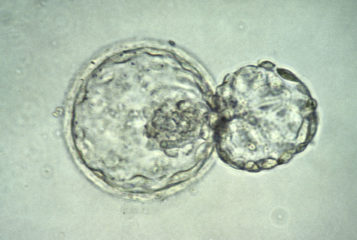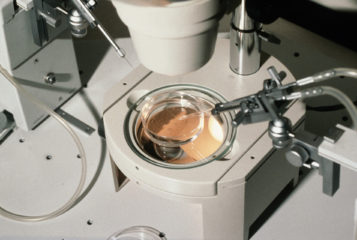Progress Educational Trust (PET)'s annual conference, 2011, 'The Best Possible Start in Life: The Robust and Responsive Embryo', started with two fantastic sessions chaired by Dr Virginia Bolton, consultant embryologist at the assisted conception unit at Guy's Hospital, London, UK.
The opening session, 'Introduction to the Embryo', was presented by Professor Marilyn Monk, University College London, who described the major findings of her research into mouse embryo development over the past 30 years. The mouse has provided a useful model for studying early development in experiments, which, for ethical reasons, could not have been performed using human embryos. Its early stages of development are remarkably similar to humans, and by adapting molecular techniques for use on the minute scale required for studying embryos, Professor Monk has been able to look at genetic changes that occur during the growth of a multicellular organism.
An intriguing phenomenon her work helped elucidate is the epigenetic regulation of genes in development. She described this as being like the cell's 'software', controlling the working of the genome, the cell's 'hardware' — a useful analogy for those less familiar with the field of genetics. Epigenetic programming in the embryo changes during development, enabling it to respond to its environment, for example the nutritional or psychological state of its mother.
Professor Daniel Brison, consultant embryologist at St Mary's Hospital, Manchester, started the second session, 'The Embryo's Out of Body Experience', with his presentation 'Culture Shock'. He addressed the fundamental differences between the 'warming and reassuring' environment of the uterus and the artificial environment of embryo culture laboratories, and the measures being taken to address these differences. Professor Brison raised a number of important concerns, not least the possibility that IVF may have detrimental effects on the health of the children conceived.
Research has shown that mouse embryos conceived through IVF develop less successfully and have changes in their gene expression, epigenetics and behaviour compared to naturally conceived mice. There is evidence humans conceived through IVF have lower birth weight, altered blood pressure and a higher risk of congenital disorders caused by epigenetic changes. Although these effects are minimal, Professor Brison cautioned that, as the oldest IVF children are only now in their early thirties, it will be imperative to monitor them for late-onset disorders such as hypertension and coronary heart disease.
In light of this, Professor Brison recommended scientists work to improve embryo culture conditions and, ideally, match them to the maternal environment. This is particularly relevant with the increasing trend for extended culturing of embryos before implantation. Focusing on the culture media, he raised two particular concerns with current commercial products. First, they are all based on optimisation experiments using animal, not human, embryos. Second, there is a tendency to continue adding supplements without removing any, which, he argued, may not be the most desirable approach.
The final talk, 'Coming in from the Cold', given by Dr Maureen Wood, University of Aberdeen, gave an overview of embryo cryopreservation prior to implantation. She emphasised the importance of this for increasing cumulative pregnancy rates, and for encouraging patients and clinics to accept single embryo transfer policies.
The ability of the embryo to withstand cryopreservation is, as Dr Wood pointed out, a testament to its robustness. Data collected from the Association of Clinical Embryologists Best Practice Meeting, 2011, showed an overall survival rate of 52 to 98 percent for cryopreserved embryos across the two techniques — freezing and vitrification (where the embryo and storage solution are solidified in liquid nitrogen without the formation of crystals).
Interestingly, the data demonstrated a wide range of embryo survival and pregnancy rates for both techniques, with no clear evidence that one carries a particular advantage. Dr Wood finished her talk, like Professor Brison, by expressing the need for continued long-term follow-up of IVF children. Furthermore, she recommended there be a distinction between frozen and vitrified embryos, in order to assess any specific health risks imposed by either method.
The open debate that followed provided an opportunity for the speakers to comment on any additional facets of embryo culture that may affect development and/or long-term health. Among the issues raised were the exposure of the embryo to light during IVF, which wouldn't occur in a natural pregnancy, and the significance of the journey made by naturally conceived embryos from the site of fertilisation, down the fallopian tubes to the uterus, that is bypassed in IVF.
As the sessions drew to a close I was left to reflect on two particularly important points. First, should surplus pre-implantation human embryos be used as a research tool for optimising embryo culture conditions, in preference to the children/adults born through IVF? And second, do we expect too much from IVF embryos with respect to successful pregnancy rates, given that it is estimated that only one in four naturally conceived embryos survive to term? I hope these questions will, in the spirit of PET's ethos, stimulate further debate.
PET is grateful to the conference's gold sponsors, Merck Serono. A report of the third session will be published in next week's BioNews.






Leave a Reply
You must be logged in to post a comment.